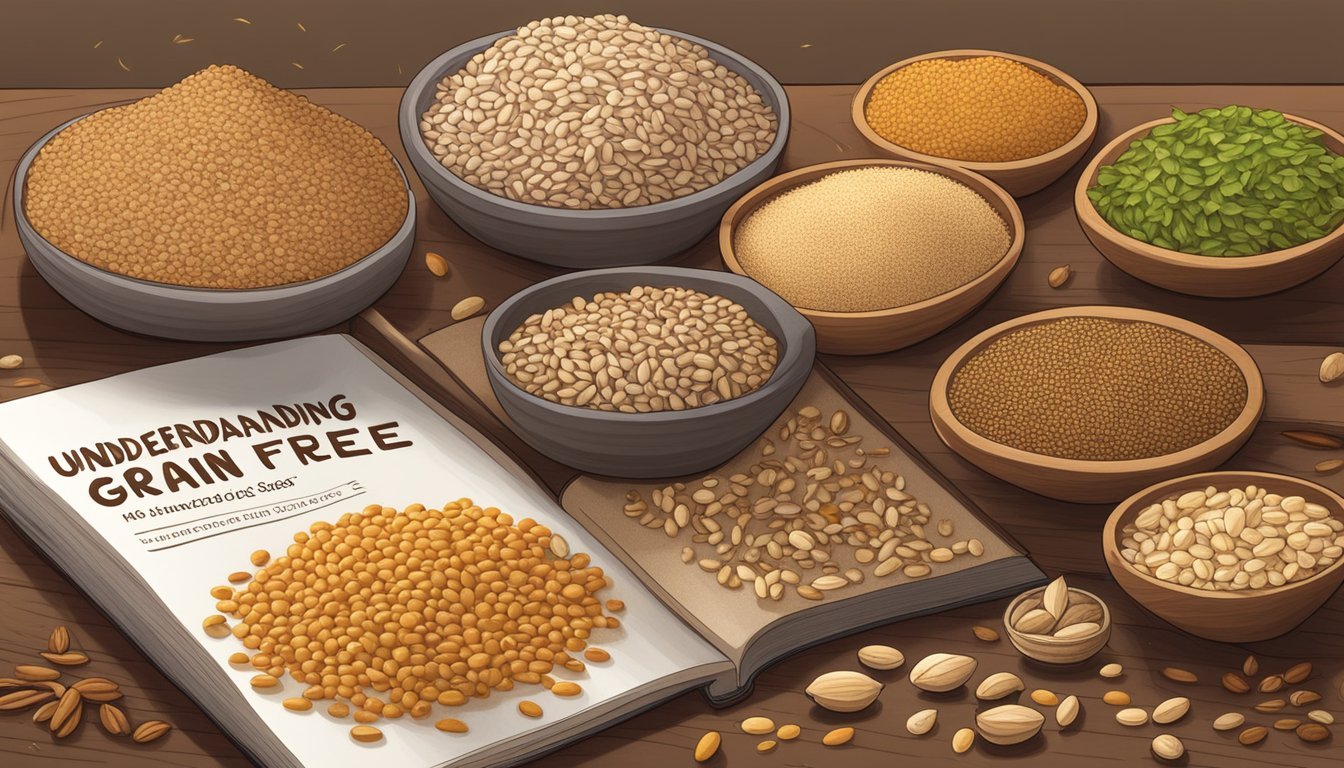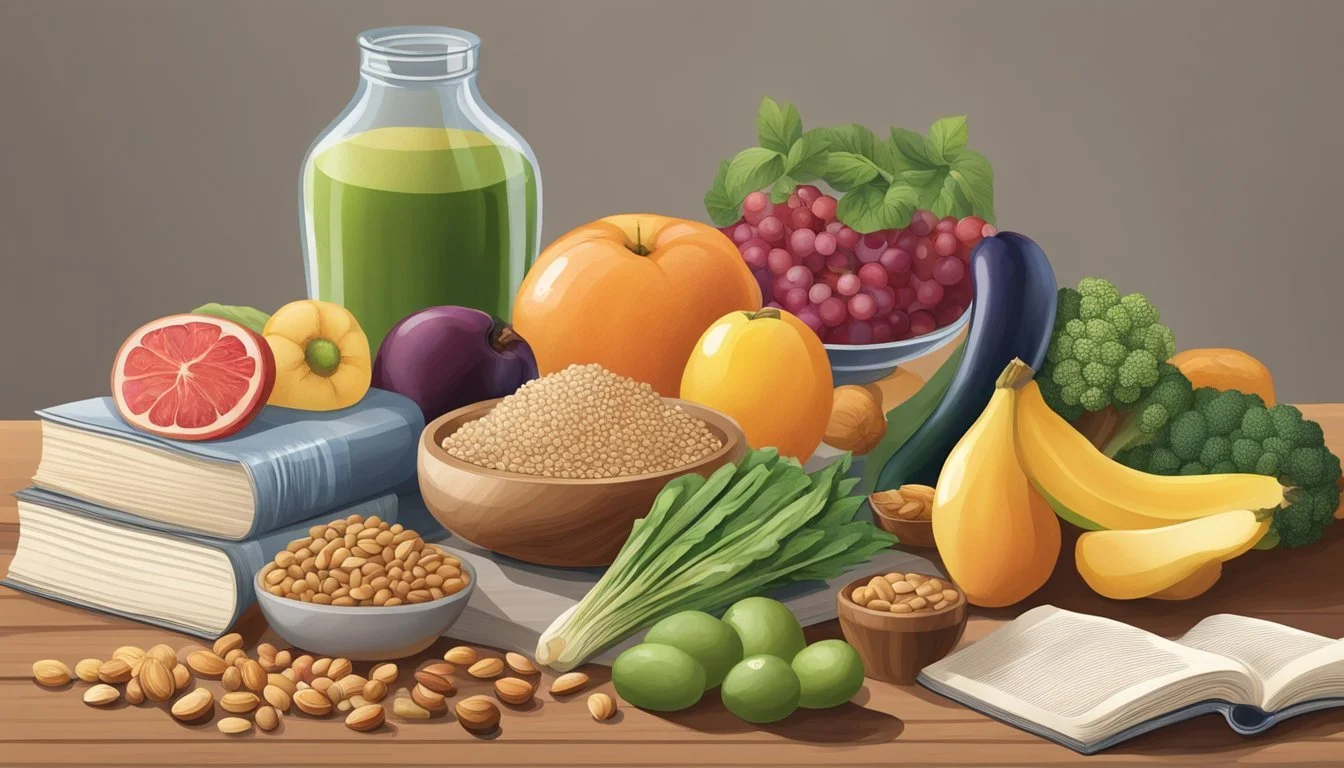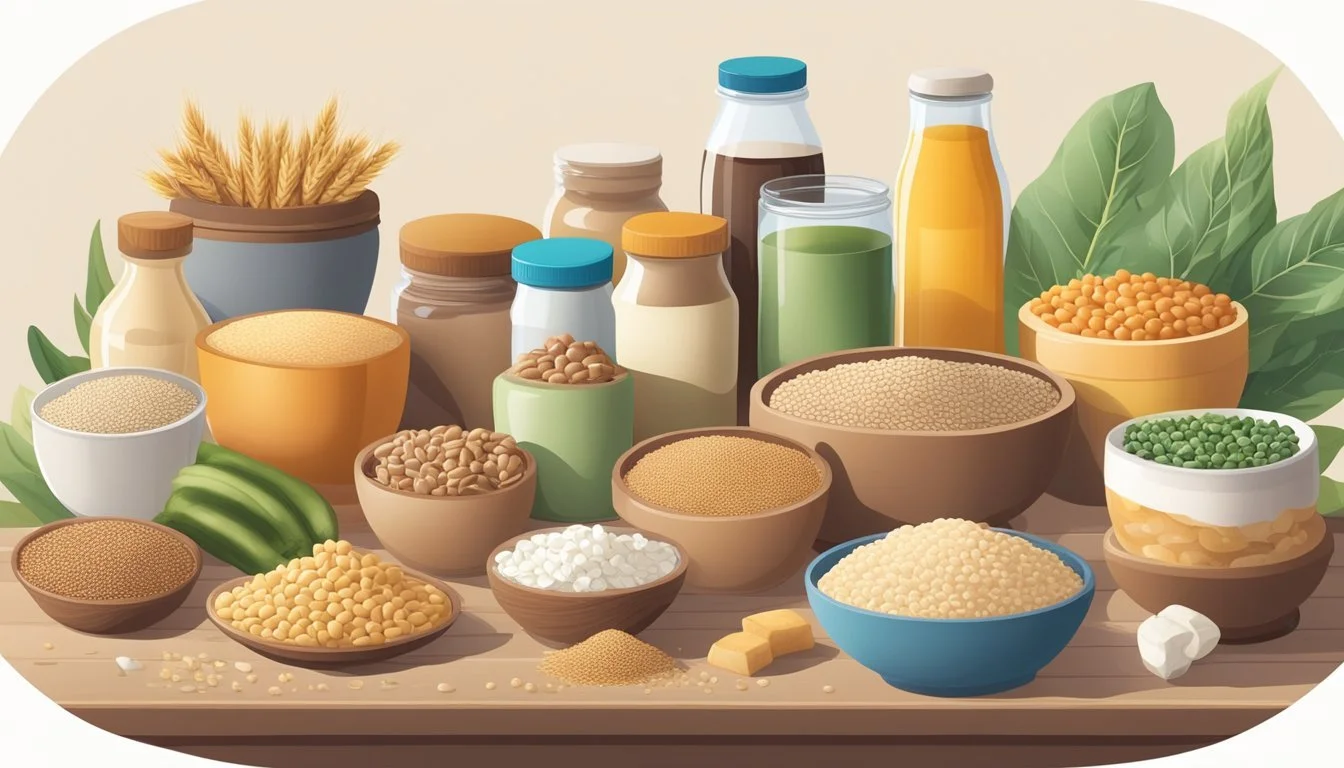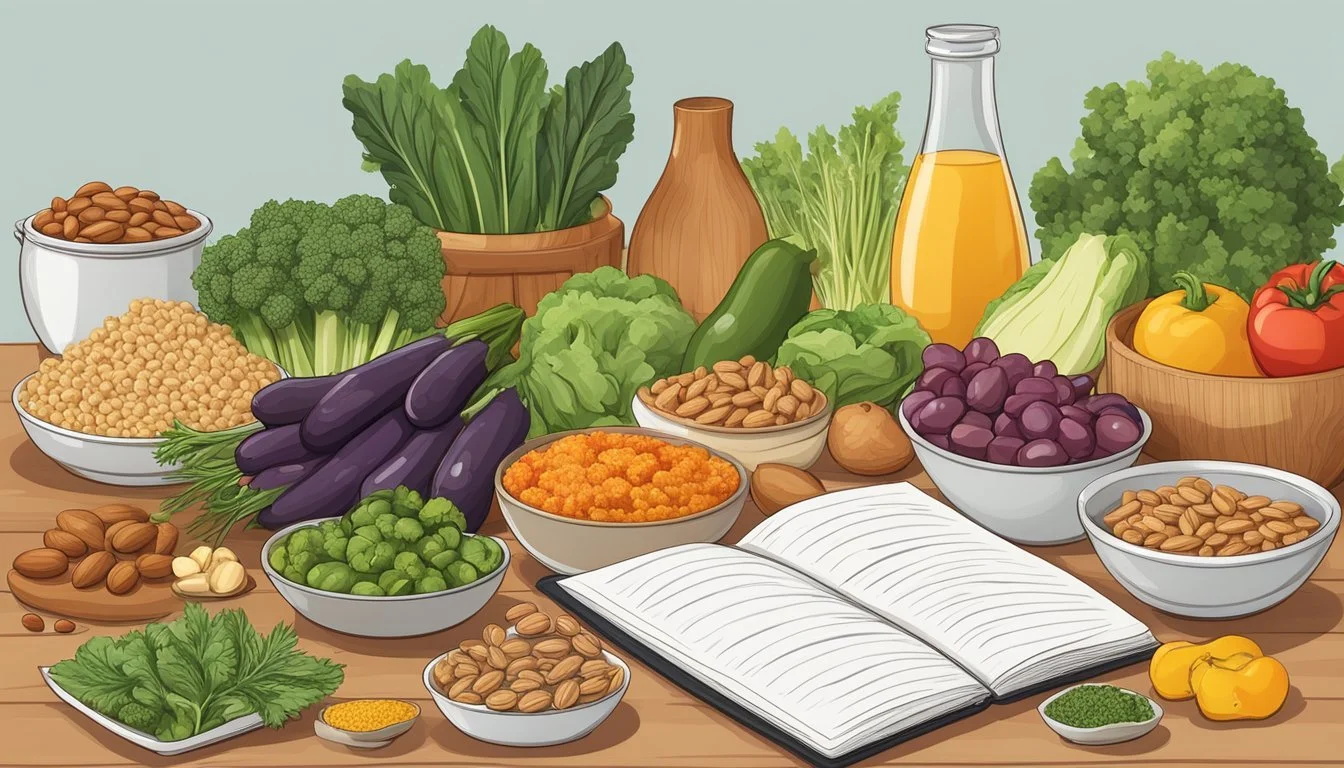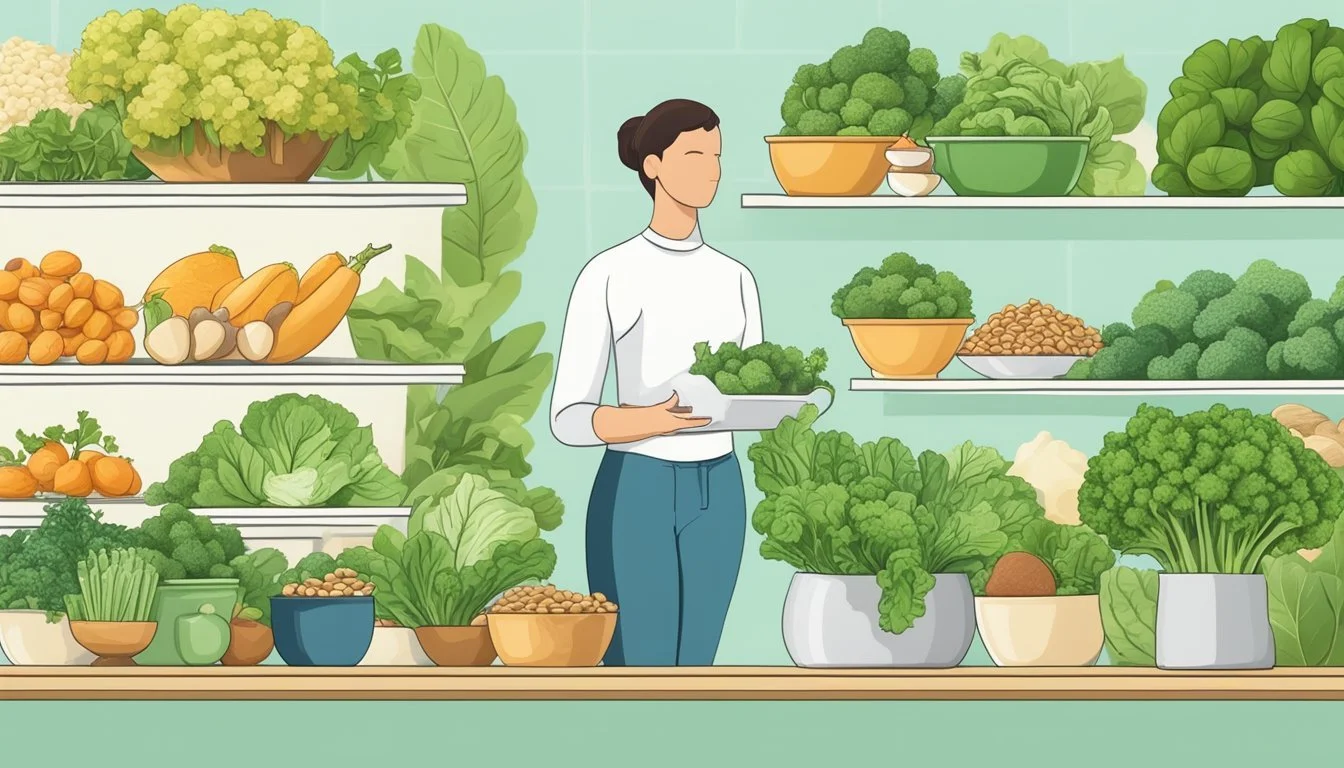Grain-Free Diet and Bone Health
Insights into Nutritional Impact
A grain-free diet excludes all forms of grains, including wheat, rice, and corn, among others. This diet has gained popularity among those with celiac disease or non-celiac gluten sensitivity, as it naturally eliminates gluten, a common trigger for their symptoms. While going grain-free can offer relief to those with certain health conditions, it has also become a lifestyle choice for individuals aiming for potential health improvements. However, there is a growing conversation about how eschewing grains entirely may influence bone health since grains can be a source of nutrients such as fiber, vitamins, and minerals that are important for maintaining bone density and overall skeletal strength.
Bone health is a critical aspect of overall well-being, with diet playing a significant role. Adequate intake of calcium and vitamin D is widely recognized as essential for healthy bones. Grain-free diets can require careful planning to ensure these nutrients, often found in fortified grains, are sourced from other foods. Proponents of grain-free diets suggest that by focusing on a variety of meats, legumes, fruits, and vegetables, one can achieve a nutrient-dense diet that supports bone health. On the other hand, some health experts caution that eliminating grains could lead to deficiencies if the diet lacks balance and careful supplementation.
The decision to adopt a grain-free diet should be based on individual health needs and informed by accurate information about both its potential benefits and drawbacks. For those considering this diet for the sake of bone health, it is vital to understand the role of nutrients found in grains and how their absence can be compensated through other dietary choices. Consulting healthcare providers and nutrition experts can help tailor a diet that aligns with one's health goals while ensuring that bones remain strong and healthy.
Adopting a grain-free diet can significantly impact bone health, contributing to overall well-being and vitality. By prioritizing nutrient-dense foods and embracing a grain-free approach, individuals can support their bone health while relishing a diverse and satisfying culinary experience.
Understanding the influence of grains on grain-free hormonal balance and grain-free cognitive function can deepen the appreciation for the positive effects of a grain-free diet on bone health. By being mindful of ingredients and exploring diverse recipes, individuals can create meals that cater to their overall wellness, including the strength and health of their bones.
Cultivating a grain-free garden can also enrich the journey towards better bone health, allowing individuals to grow fresh, organic produce that supports their grain-free dietary choices.
During grain-free holidays, the joy of savoring nourishing and bone-friendly dishes can elevate festive gatherings, creating a sense of well-being and togetherness while honoring dietary preferences.
For added convenience, exploring grain-free meal delivery services can provide an effortless way to enjoy a variety of nourishing, bone-supportive dishes, ensuring that individuals can prioritize their bone health with ease.
By embracing the benefits of a grain-free diet for individuals of all ages, including grain-free kids, individuals can support their bone health and overall well-being, creating a foundation for a vibrant and fulfilling lifestyle.
Understanding Grain-Free Diets
A grain-free diet eliminates all grains and grain-derived products, focusing on whole foods like meats, vegetables, and nuts. It is important for individuals to know the components of such diets, the reasons they might choose this lifestyle, the potential health benefits they may receive, and to clarify common misconceptions around grain-free eating.
Components of Grain-Free Diets
Grain-free diets consist of:
Meat: Including beef, pork, and poultry.
Fish and Seafood: Such as salmon, trout, and shellfish.
Eggs: Chicken, duck, and quail eggs.
Dairy Products: Items like milk, cheese, and yogurt.
Vegetables: Both leafy greens and starchy types, excluding corn.
Fruits: All types of fruits are typically included.
Nuts and Seeds: A variety of nuts and seeds without added grains.
Reasons for Choosing a Grain-Free Lifestyle
Individuals may opt for a grain-free lifestyle due to:
Health Conditions: Such as celiac disease or non-celiac gluten sensitivity.
Dietary Preferences: Some prefer the perceived wholesomeness of a grain-free diet.
Weight Management Goals: A grain-free approach can sometimes help in managing body weight.
Potential Health Benefits
Adopting a grain-free diet can potentially lead to:
Improved digestive health for those with grain intolerances.
Stabilized blood sugar levels due to the reduction in processed grain consumption.
Common Misconceptions
Dairy and Legumes: Contrary to some claims, these can be part of grain-free diets unless other dietary restrictions apply.
Nutrient Deficiencies: While it's believed that grain-free diets may lead to nutrient deficiencies, a well-planned diet with a variety of foods can provide adequate nutrition.
Nutritional Implications
Adopting a grain-free diet has specific nutritional implications that need to be carefully considered. Such a diet will shift the intake of certain micronutrients, proteins, fats, and carbohydrates, which are essential for maintaining bone health and general well-being.
Micronutrients in Grain-Free Diets
A grain-free diet eliminates a major source of B vitamins and fiber, but it can be rich in other micronutrients, especially if it includes a variety of whole foods. It is crucial to focus on vitamins and minerals that are essential for bone health, such as calcium and vitamin D, which can be obtained from leafy greens, nuts, and fortified soymilk.
Leafy greens (e.g., kale, spinach)
Nuts (e.g., almonds)
Legumes (e.g., beans)
Vitamin D Sources:
Fortified foods (e.g., soymilk, orange juice)
Sunlight exposure
Protein and Fats in a Grain-Free Plan
A well-constructed grain-free diet should include adequate protein, which is essential for bone strength. Legumes, such as beans and lentils, along with tofu, tempeh, and edamame, can serve as excellent protein sources. Healthy fats, found in foods like avocados and olive oil, are important for nutrient absorption and overall health.
Protein Sources:
Legumes (beans, lentils)
Soy products (tofu, tempeh)
Animal products (if not excluded)
Fat Sources:
Nuts and seeds
Avocados
Olive oil
Sourcing Carbohydrates without Grains
Carbohydrates are vital for energy, and in a grain-free diet, they must be sourced from other foods. Starchy vegetables and pseudocereals like quinoa (What wine goes well with quinoa?) and buckwheat are nutrient-dense alternatives to grains. These not only provide energy but also contain fiber, vitamins, and minerals.
Starchy Vegetable Sources:
Sweet potatoes
Butternut squash
Pseudocereal Sources:
Quinoa
Buckwheat
Bone Health and Grain-Free Eating
Adopting a grain-free diet necessitates careful consideration of nutrient intake to maintain bone health. Individuals need to ensure adequate consumption of essential minerals and vitamins that are vital for bone strength and density.
Calcium and Vitamin D Without Dairy
While dairy is a common source of calcium and vitamin D, those on a grain-free diet can obtain these nutrients from alternative sources. Leafy greens such as kale and broccoli, and fish like sardines and salmon are rich in calcium. To fulfill vitamin D needs without grains or dairy, one should focus on fortified foods and sun exposure. Vitamin D supplements can also be considered to ensure adequate levels.
Non-dairy sources of calcium:
Kale
Broccoli
Sardines
Salmon
Phosphorus and Magnesium in Grain-Free Options
Phosphorus and magnesium contribute to bone health and are available in grain-free foods. Nuts and seeds, such as pumpkin seeds and almonds, are high in magnesium, which works with calcium to build strong bones. Meat, fish, and some vegetables are good sources of phosphorus.
Grain-free sources of magnesium and phosphorus:
Pumpkin seeds: Magnesium
Almonds: Magnesium, Calcium
Sunflower seeds: Magnesium
Fish: Phosphorus, Calcium (certain types)
Meat: Phosphorus
Impact on Bone Density
Studies suggest that a well-balanced diet without grains does not inherently lead to decreased bone density if one maintains an adequate intake of necessary nutrients. However, vigilance is required to incorporate diverse sources of calcium, vitamin D, magnesium, and other bone-supporting nutrients. Exercise, particularly weight-bearing activities, complements a grain-free diet to promote bone strength.
Grain-Free Diets and Chronic Conditions
Exploring a grain-free diet offers potential benefits for individuals with chronic conditions, particularly those associated with gluten intolerance, blood sugar regulation, and systemic inflammation.
Grain-Free for Celiac and Gluten Sensitivity
Individuals with celiac disease, an autoimmune condition, must adhere to a gluten-free diet to prevent damage to the small intestine. A grain-free diet, by definition, eliminates all sources of gluten, as it avoids wheat, barley, and rye. This can be especially beneficial for those with celiac disease, ensuring that gluten contamination is minimized. For those with non-celiac gluten sensitivity, removing grains may alleviate symptoms such as bloating, gas, and abdominal pain.
Effects on Diabetes and Blood Sugar Levels
For those managing diabetes, a grain-free diet may aid in stabilizing blood sugar levels. Grains, especially refined grains, are known to cause blood sugar spikes. Consequently, eliminating grains can lead to a more stable glycemic response. However, it's key for individuals with diabetes to balance their diet with healthy fats, proteins, and carbohydrates from non-grain sources to maintain overall health.
Autoimmune Conditions and Inflammatory Responses
A grain-free diet might also benefit individuals with autoimmune diseases, beyond celiac disease. The diet can potentially reduce inflammation, a common issue in autoimmune disorders. For instance, the elimination of grains might decrease the body's inflammatory response in diseases like rheumatoid arthritis. However, more research is needed to fully understand the impact of a grain-free diet on various autoimmune conditions.
Alternative Foods and Substitutes
When exploring a grain-free diet, it's vital to consider nutrient-dense alternatives that can provide similar benefits to whole grains. These substitutes can support bone health while aligning with grain-free dietary choices.
Gluten-Free Grains and Pseudocereals
Quinoa: A complete protein source that contains all nine essential amino acids, quinoa is an excellent gluten-free substitute for grains. It is also rich in magnesium, phosphorus, and manganese, nutrients essential for bone health.
Buckwheat: Despite its name, buckwheat does not contain wheat and is gluten-free. It's a good source of fiber and contains bioflavonoids such as rutin, which supports circulation and bone strength.
Amaranth: Another pseudocereal, amaranth is high in protein and calcium, making it beneficial for bone health. It is also gluten-free and can be used in a variety of dishes from breakfast porridge to dinner sides.
Non-Grain Flour Options
Almond Flour: Derived from ground almonds, almond flour is not only gluten-free but also high in protein and Vitamin E, an antioxidant that supports bone maintenance.
Coconut Flour: Made from dried coconut meat, coconut flour is a grain-free, gluten-free alternative that provides a rich texture and subtle sweetness to baked goods. It is also high in fiber.
Incorporating Legumes and Soy
Beans: They are a substantial source of protein and other nutrients critical for bone health, such as magnesium and phosphorus. Beans can be included in the diet through soups, salads, or as a meat substitute.
Soy: Products like tofu, tempeh, edamame, and soy milk are not only protein-rich but also contain calcium and other important bone-health nutrients. Soy-based products can be considered a primary protein source for those on a grain-free diet.
Meal Planning and Recipes
Effective meal planning on a grain-free diet focuses on incorporating a wide array of nutrients through diverse food groups, like proteins, fats, and non-grain carbohydrates. Careful selection of vegetables, seeds, eggs, and nuts, along with an inclusion of items like sweet potatoes and zucchini, ensures a balanced diet. Grain-free does not equate to a lack of variety; through thoughtful recipes and meal ideas, one can enjoy a rich assortment of flavors and nutritional benefits.
Grain-Free Breakfast Ideas
Breakfasts in a grain-free diet can be both nutritious and satisfying. A high-protein start with eggs—be it scrambled, poached, or in an omelet—provides energy and pairs well with various vegetables like spinach or mushrooms. For those who prefer a quick bite, smoothies with a blend of seeds, such as chia or flax, mixed berries, and a handful of nuts offer a nourishing option.
Omelet with spinach, mushrooms, and a sprinkle of feta cheese.
Chia seed pudding made with almond milk, topped with fresh berries.
Lunch and Dinner Inspiration
Lunches and dinners on a grain-free diet can range from simple salads to complex dishes. Those adhering to paleo or keto guidelines might opt for a sweet potato hash with ground turkey and avocado. Alternatively, zucchini noodles, also known as 'zoodles', make a versatile base for pasta sauces and stir-fries.
Salad of mixed greens, cherry tomatoes, avocado, and grilled chicken with lemon-olive oil dressing.
Zucchini noodles served with a creamy alfredo sauce and grilled shrimp.
Snacks and Desserts Without Grains
Snacks and desserts without grains can be both healthy and delightful. A mix of nuts and seeds can satisfy mid-day cravings while providing essential healthy fats and proteins. Sweet tooths can be satisfied with desserts like coconut milk-based panna cotta or baked sweet potato fries dusted with cinnamon.
Trail mix with almonds, sunflower seeds, and unsweetened coconut flakes.
Baked sweet potato fries with a dash of cinnamon and a side of dairy-free yogurt for dipping.
Navigating Challenges and Tips
When adopting a grain-free diet for bone health, particularly for those with gluten intolerance or celiac disease, it’s important to consider the challenges of maintaining the diet in social settings, ensuring affordability, and its sustainability over time.
Eating Out Grain-Free
When dining at restaurants, individuals should prioritize establishments with grain-free options or those known to cater to special dietary requirements. It is advisable to review menus online beforehand and consider contacting the restaurant to discuss specific food preparation practices. They may consult with a nutritionist to gain insights on suitable grain alternatives and strategies for dining out without compromising their dietary restrictions.
Dealing with Social Situations
In social gatherings, clear communication is essential. One should inform hosts of their dietary restrictions, offering to bring a grain-free dish to share. It’s beneficial to become familiar with common grain-free recipes that appeal to a broad audience, ensuring they can partake in communal eating experiences. They should remain educated about which foods to avoid and have an understanding of cross-contamination to manage their gluten intolerance or non-celiac gluten sensitivity effectively.
Sustainability and Affordability
Balancing the costs and long-term adherence to a grain-free diet requires strategic planning. Individuals should:
Buy in bulk: Purchase grain-free staples such as nuts, seeds, and pseudocereals like quinoa and buckwheat.
Focus on in-season produce: Fresh vegetables and fruits are cornerstones of nutrition on a grain-free diet.
Prepare meals at home: Reduce expenses by making grain-free meals in bulk, which also simplifies daily dietary management.
Being aware of these strategies helps individuals maintain a grain-free diet beneficial for bone health without compromising their quality of life or financial means.
FAQs on Grain-Free Diets
What is a grain-free diet?
A grain-free diet eliminates all grains, including wheat, rice, oats, barley, and rye. Instead, individuals consume more vegetables, fruits, meats, and dairy products. It is similar to a gluten-free diet but more restrictive, as it also excludes grains that do not contain gluten.
Is a grain-free diet the same as Whole30?
While both diets exclude grains, the Whole30 program is more stringent, banning sugar, alcohol, dairy, legumes, and certain additives for 30 days. A grain-free diet focuses primarily on the exclusion of grains and may not restrict these other food groups.
Can a grain-free diet aid in weight loss?
Weight loss on a grain-free diet may occur due to a reduction in processed foods and an increased intake of protein and fiber from other food sources. However, weight loss is not guaranteed and depends on overall calorie intake and individual metabolism.
What are the potential benefits of a grain-free diet?
For individuals sensitive to gluten or those with celiac disease, grain-free diets can alleviate symptoms and improve digestive health. Some people may also experience reduced inflammation and an increased sense of wellbeing.
Are there risks associated with a grain-free diet?
A grain-free diet can lead to nutrient deficiencies if not carefully managed, as grains are a source of important vitamins and minerals. It's essential for individuals to ensure they are obtaining the necessary nutrients from other foods or supplements.
How does one ensure adequate bone health on a grain-free diet?
Incorporating foods rich in calcium and vitamin D is crucial for bone health. Leafy greens, fatty fish, and fortified dairy substitutes can provide these nutrients. Regular exercise and sunlight exposure also contribute to strong bones.


